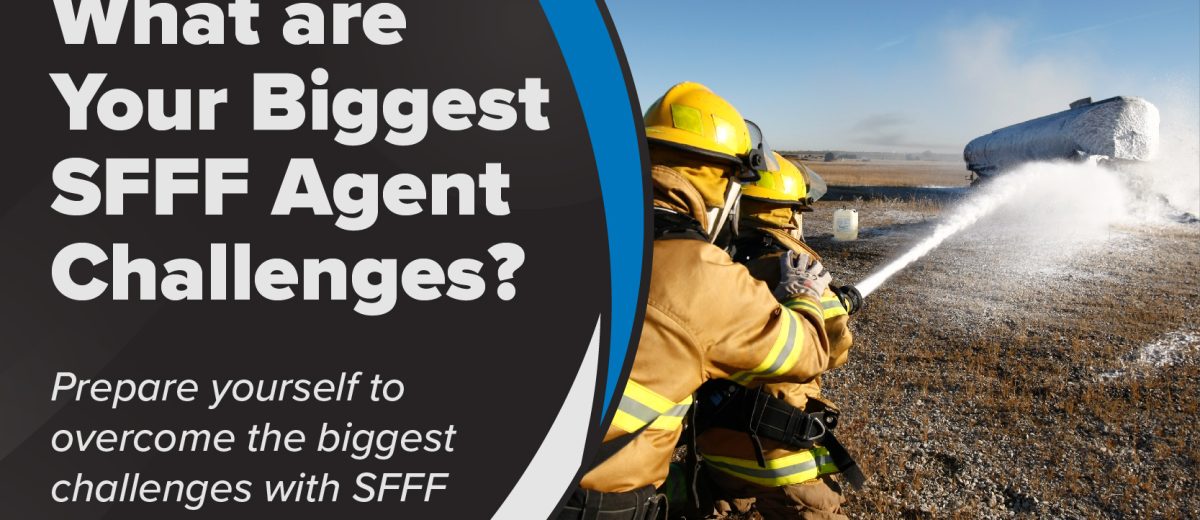What Challenges Can You Expect with SFFF Firefighting Foam?
As you switch over to SFFF formulations, you face a few different challenges. Have you explored them?
One of the first major challenges you face is that SFFF chemical formulations can vary widely by manufacturer. Each manufacturer’s SFFF agent formulation may be significantly different from other producers, even proprietary.
Think about that for a minute — when looking at legacy AFFFs, there were differences in various manufacturer’s formulations — but most of the features and benefits were about the same. Essentially, they could be considered as a “class” of agents, with minor variations amongst themselves.
When in the market to buy 50 gallons of AFFF, you could receive bids from several different reputable manufacturers, decide on one, and have a level of certainty that the product would be at least somewhat comparable and close in fire suppression performance to the other producers’ products.
When discussing new SFFF agents, this is not necessarily so. At least for the immediate future, most F3 formulations, by each manufacturer, are likely to have significant chemical differences and may provide different firefighting results.
Here are a few of the challenges you can expect to face:
Proportioning Differences: Not a Simple Replacement
When changing to new F3 foam agents, they may not be a “drop in” replacement for AFFF.
When transitioning to new F3 foam agents, it's crucial to be aware of the potential proportioning differences. Simply draining, flushing, and disposing of existing AFFF concentrate stock on a fire apparatus may not guarantee effective proportioning with SFFF agents. The viscosity and chemical properties of the SFFF foam concentrate may or may not be compatible with your existing foam proportioning device.
We have received scattered reports of firefighters facing difficulties in using existing eductors to dispense F3 agents. Be prepared for these potential challenges when making the switch.
Application Rate Changes: Adjusting Your Approach
Another important aspect to consider is the need to adjust foam solution application rates when transitioning from legacy AFFF to new SFFFs. It's crucial to understand the implications of these changes and how they can affect your firefighting efforts.
“Application rate” is expressed in terms of gpm of foam solution per square feet of flammable liquid fuel surface. Here is an example: when combating a burning Type III Gasoline Blend (15% Ethanol) spill fire, the application rate required from a major foam agent manufacture is as follows:
Using their legacy AR-AFFF: a 0.15 gpm/sq. ft. application rate is required.
Using their new SFFF: a 0.22 gpm/sq. ft. application rate is required.
That’s a 47% increase in application rate required.
To put it simply, if you were using a 95-gpm in-line Eductor with their legacy AFFF, the 0.15 gpm/sq. ft. application rate would allow you to extinguish a 633 sq. ft. fuel surface or a 25' x 25' area.
However, since their new SFFF requires a 47% increase in application rate, to come close to matching the above 25’ x 25’ hazard capability, a higher gpm eductor needs to be deployed.
Using a 125-gpm eductor with SFFF at 0.22 gpm/sq. ft., it will yield capability to extinguish a 568 sq. ft. fuel surface or a 24’ x 24’ fuel surface area.
As the example demonstrates, moving away from a 95-gpm eductor and using a 125-gpm with SFFF is essential to come close to having the same fire suppression capability with this SFFF agent.
Differences in Finished Foam Application: Understanding the Trade-Offs
We previously discussed that SFFF foam applications are considered somewhat of a downgrade from the use of legacy AFFF. Why is that so?
Legacy AFFF offers multiple benefits beyond just extinguishing fires. It forms an invisible aqueous film that quickly spreads ahead of the foam blanket, knocking down flames and covering surfaces and objects. Additionally, it acts as a physical barrier to slow down or stop vapor release from the flammable liquid surface.
In contrast, SFFF foam agents primarily rely on the foam blanket as a barrier between the fuel and atmosphere. The quality of the finished foam generated by the nozzle plays a crucial role in the performance of SFFF agents. Keep in mind that with SFFF, there are fewer elements or features of fire suppression at work compared to legacy AFFF.
Navigating the Challenges Ahead
As you navigate the challenges of varying SFFF formulations, proportioning differences, changes in application rates, and differences in finished foam application, it's essential to stay informed and adapt your firefighting strategies accordingly. Being aware of these factors will help you make informed decisions and ensure effective fire suppression in the face of evolving technologies. Stay vigilant and prepared as you embrace the new possibilities and complexities of SFFF agents.
